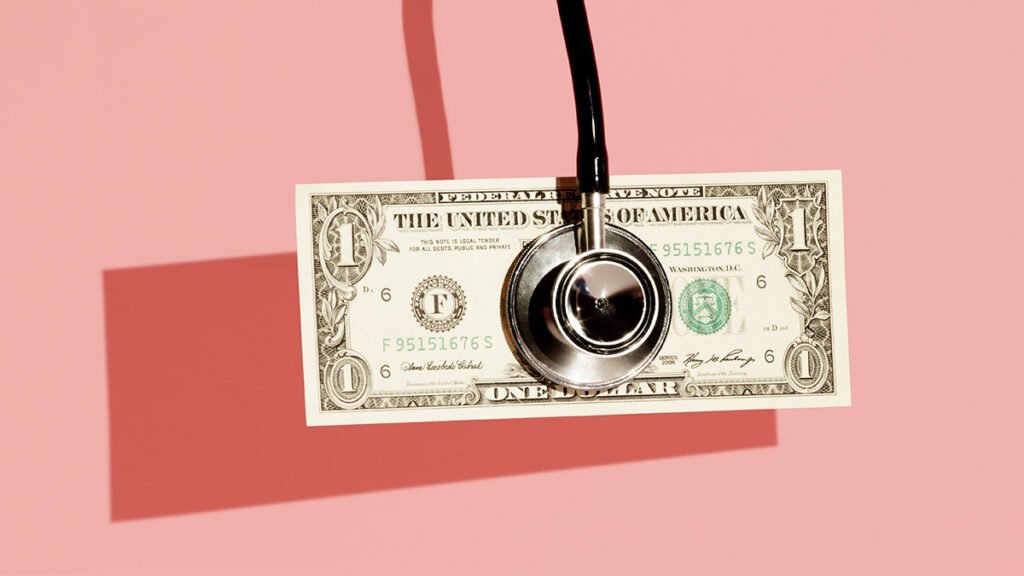One of the most controversial and heavily debated topics to this day is healthcare. Despite the amount of discussion over the high costs of healthcare, there seems to be little change. In fact, it’s getting worse with the inflation that today’s world has experienced. But why is healthcare so expensive? And why does the cost keep increasing?
Healthcare has especially shown its importance in the COVID-19 era, as according to the CDC, almost half a million people were hospitalized from March 2020 to May 2023, just in the United States. Without healthcare, many people would likely go into poverty. So yes, healthcare may be keeping us alive, but should something so necessary for being alive be so expensive?
To put a number to it, the average person in the United States pays about $12,900 annually, according to 2021 research facilitated by the Peter G. Peterson Foundation. This cost is an 18 percent increase in healthcare costs from 1960. The cause is the constant aging of our population. As time passes, people are getting older, resulting in more diseases affecting ages 65 and older, such as Alzheimer’s and different types of heart disease, creating an increasing need for healthcare. It is important to note that America, however, spends the most on healthcare while “justifying” these costs with supposedly better prescriptions and more advanced technology.
On a more global scale, however, Brazil is the only country that offers free healthcare, while other countries like France, Germany, Sweden, and many more follow the universal healthcare system. First, let’s discuss Brazil, shall we? So, Brazil can offer free healthcare through its Sistema Unica de Saude (SUS), which is the national health system of Brazil. It operates “at all levels of government: federal, state, and municipal,” with “the delivery of care” occurring at both the municipal and state levels. (Columbia University). This system can offer free services such as outpatient care and pharmaceuticals if the patient has a “National Health Identification” card from the SUS (Columbia University). This system decreases financial burden, but the negative aspects become visible in the flooding of hospitals, more wait times, and less doctor pay.
On the other hand, universal healthcare is mainly funded through taxes and can be described as essentially Medicare being available to everyone. While this system may not be entirely free, the costs are significantly lowered with much more affordable copays. In that way, if you go to the doctor for a simple stomach ache, you might only have to pay a $20 copay as opposed to $150. The negative aspects, however, tend to be the same.
But the question remains: why won’t the United States adopt these policies? Why is the United States still spending the most on healthcare while other countries prosper without having to spend as much? Julio Frenk, Dean of Harvard School of Public Health, states, “The prospect of changing the healthcare system generates resistance because there are huge economic interests vested in the current structure: pharmaceutical, construction, equipment, information technology. It is the largest sector of the U.S. economy.” Our country spends the most on healthcare, while other countries can provide similar care without spending as much, which conveys that our country needs to prioritize our healthcare and have more discussions about it within the government. However, while there may be negativity, we should still appreciate the policies the United States has established for lower-income people, Medicaid, and people 65 and older. According to the Kaiser Family Foundation, about “1 in 5 Americans” utilize Medicaid and its benefits for more affordable healthcare.
The rising healthcare costs may never stop, especially with the advancing medical technology and drug costs. Now, don’t get me wrong, better medical technology will mean more scientific research leading to better treatments, but the impact this has on costs is huge as we are essentially paying for the development of our healthcare system. Therefore, as healthcare costs rise with time, whether in terms of drug costs, hospital care, or emergency services, it becomes the responsibility of the US to adopt more cost-effective healthcare plans, such as universal healthcare coverage, which will progress our country to be more inclusive with its healthcare and be widely available to all people who need it.
Works Cited
Columbia University Mailman School of Public Health. “Brazil Summary.” Comparative Health Policy Library. Columbia University Mailman School of Public Health, n.d. Web. Accessed 13 June 2023. https://www.publichealth.columbia.edu/research/others/comparative-health-policy-library/brazil-summary.
Peterson Foundation. “Why Are Americans Paying More for Healthcare?” Peter G. Peterson Foundation, 2023. Web. Accessed 13 June 2023. https://www.pgpf.org/blog/2023/01/why-are-americans-paying-more-for-healthcare.
Centers for Disease Control and Prevention. “COVID-19: COVID-NET.” CDC, n.d. Web. Accessed 13 June 2023. https://gis.cdc.gov/grasp/covidnet/covid19_5.html.
Kaiser Family Foundation. “10 Things to Know About Medicaid: Setting the Facts Straight.” KFF, n.d. Web. Accessed 13 June 2023. https://www.kff.org/medicaid/issue-brief/10-things-to-know-about-medicaid-setting-the-facts-straight/.
Harvard T.H. Chan School of Public Health. “Health Care Reform: A Hard Look at Centennial Achievements.” Harvard T.H. Chan School of Public Health, n.d. Web. Accessed 13 June 2023. https://www.hsph.harvard.edu/news/magazine/centennial-health-care-reform-hard/.
Organisation for Economic Co-operation and Development (OECD). “Health Care Quality and Outcomes.” OECD, n.d. Web. Accessed 13 June 2023. https://www.oecd.org/health/health-care-quality-and-outcomes.htm.
